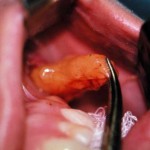
In select patients, removal of the buccal fat pad (which lies immediately under the cheekbone and is about the size of a golfball in most patients) can help contour a fuller face. I have performed this procedure, in conjunction with liposuction of the neck andchin implants, many times in patients whose desire is to thin out their fuller faces.
In numerous anatomic studies, dissectors have detailed the known relationship between the facial nerve, buccal fat pad and the parotid duct. Given the frequent proximity to this area during many types during aesthetic and reconstructive facial surgery, it is useful to have a better appreciation of this midfacial crossroads region.
Like most cadaveric studies, there are no absolutes for each person’s anatomy. However, it is clear that several buccal branches of the facial nerve interlace with the multi-lobed buccal fat pad. Most commonly, this is on the superficial (outer) aspect of the buccal lobe, away from intraoral approaches of manipulation. For this reason,
aggressive buccal lipectomies may inadvertently damage these branches. I have never observed facial nerve injury from a buccal lipectomy procedure but this attests to a more limited resection. Complete removal is usually aesthetically undesireable but also places these nerve branches at risk. Since the parotid duct shares a similar pattern of proximity as that of the nerve, injury to it is also theoretically possible. However, it is a much larger structure that is tethered by its attachment to the oral mucosa and, as such, not as easily avulsed from its anatomic bed.
In performing buccal lipectomies, it is important to bear the anatomy of the facial nerve branches in mind and adjust the amount of buccal fat resection accordingly. This is why it is always better to under remove when taking out the buccal fat pad. This is probably better from a long-term cosmetic standpoint anyway.
Dr Barry Eppley
Indianapolis, Indiana


